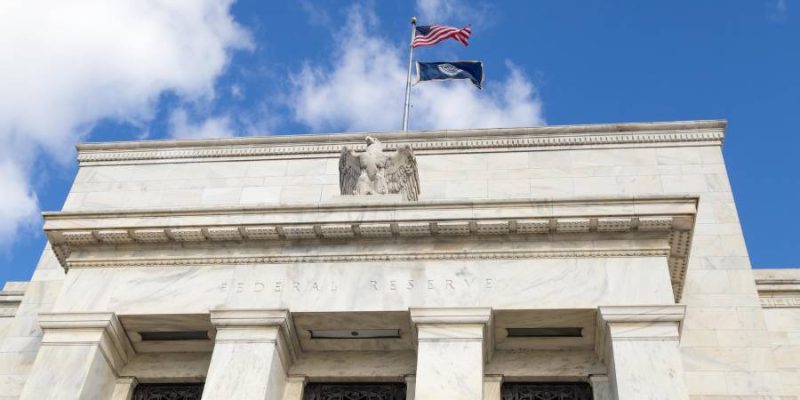by Kristina Hooper, Invesco Canada
Kristina Hooper assesses where the U.S. Federal Reserve appears to be making progress toward some of its goals and which issues are beyond the reach of central bank intervention.
It was another wild week for assets, with major stock indices — and many other asset prices — down. It reminded me of a notable family road trip that we took when I was nine years old; my dad had the ambitious idea for us to drive to Florida on vacation from New York in a new car he had just purchased.
During the course of the trip, I threw up in the back seat somewhere in rural Virginia (my father refused to stop because he was making “good time”) and my mom locked the keys in the car. We had to wait hours for the 1979 version of “roadside assistance” to show up and help us. We also had to sleep in our car in Orlando on the first night there because my father thought it wouldn’t be hard to just show up at Disney World and get a hotel room without a reservation. I also read the book “Jaws” on the way down and was sufficiently petrified that I refused to go to the beach the entire time we were in Florida. I remembered hearing my dad say more than once on the trip that “Everything is pretty much going according to plan.” And that was said without humor – he really believed that the trip was going well.
I’ve thought of his words in recent weeks as we’ve watched asset classes sell off, wondering if central bankers, especially at the U.S. Federal Reserve (Fed), believe everything is pretty much going according to plan. And, while it might be controversial for me to say this, I do believe that over the last several months, the Fed really is seeing some progress toward its goal of slowing the economy:
Tighter financial conditions
With very little actual tightening, the Fed (and other major central banks) have tightened financial conditions — central bank speak has been a powerful tool. I mentioned U.S. mortgage rates in last week’s blog, but it goes far beyond that. Financial conditions globally have tightened since major central banks began withdrawing their ultra-accommodative monetary policy in recent months.
Less froth in capital markets
Rising rates have taken the air out of many asset prices. The global stock market is in re-rating mode. In other words, markets are re-calibrating the value of stocks given expectations of significant central bank tightening. This is a normal process that typically occurs at the start of each rate hike cycle as markets adjust to higher rates. In fact, it’s not just stocks that are being re-rated; all asset classes are going through some sort of revaluation/digestion period given the start of the tightening cycle for the Fed and other major developed central banks. Fixed income markets have also experienced significant losses, given the rapid rise in rates.
It’s also happening in the crypto space. Cryptocurrencies are often viewed as assets with low correlations to stocks and bonds, thus offering diversification. Some even made the assumption that cryptos such as Bitcoin could serve as effective inflation hedges. However, as their market cap and popularity have grown in the last several years, cryptos have gone “mainstream,” and many are exhibiting behaviours more in line with traditional asset classes. This is especially so as tightening begins. Recently, cryptocurrencies have behaved more like speculative tech stocks, with both falling significantly in the last few months, and that could continue in the near term as the re-rating continues.
We also saw sell-offs and disruption in the stablecoin space. Stablecoins are differentiated from traditional cryptocurrencies such as Bitcoin in that they are intended to have a stable price and be used as a currency alternative rather than a speculative investment (many are backed by assets to ensure that they are able to maintain a stable price). For example, Tether, which is backed by the U.S. dollar, was subject to selling and briefly lost its peg. TerraUSD, another stablecoin that is not backed by the U.S. dollar but is an “algorithmic” stablecoin, was subject to even more selling last week and dropped dramatically in value. While this type of disruption is not ideal, I would argue that this is part and parcel of what happens when central banks remove liquidity from the system. And the more aggressive the anticipated tightening, the more likely we are to have short-term disruptions.
Downward pressure on asset prices deters excessive risk-taking and can reduce household net worth. A reduction in perceived wealth – the “wealth effect” – can also help to cool demand and therefore help lower inflation.
Lower real incomes
In major Western economies, real wages have been falling sharply on rising inflation despite tight labour markets and nominal wages.1 U.S. real wages have seen a significant drop despite a very tight labour market and a fast rise in nominal wages.1 Although this is not directly related to central banks, real incomes have fallen arguably because the Fed and other central banks didn’t start tightening quickly enough. However, the upside is that lower real incomes should result in a cooling of demand, which should help central banks tamp down inflation.
Issues that central banks can’t solve
So the Fed is taking froth out of capital markets and is slowing the economy. But will it be able to get inflation to its 2% target, which is its ultimate goal? Not any time soon, in my opinion, especially since there are two key issues that monetary policy can’t cure.
Russia-Ukraine
The Russia-Ukraine conflict grinds on, keeping energy prices high, disrupting supply chains and, most horribly, threatening a world hunger crisis. Central banks simply can’t solve for that, and we can only hope for a rapid resolution.
COVID lockdowns in China
Central banks also can’t solve for the COVID situation in China. COVID-related lockdowns have exacerbated inflationary pressures, disrupted supply chains and lowered growth. An example of that can be found in the most recent retail sales and industrial production data for China. But I’m actually very encouraged by recent developments. COVID infections in Shanghai have fallen dramatically, and China has announced plans to reduce COVID-related stringency measures there. Community cases are now close to zero in Shanghai. This suggests that the Omicron variant is moving through Chinese cities just as it has moved through other countries — relatively quickly. Now, China isn’t out of the woods, as Beijing is facing lockdowns. However, I believe the trend we’re seeing bodes well for China’s economy for the back half of 2022.
One important challenge for central banks from the regional impact of the Russia-Ukraine crisis and China’s zero-COVID policy is that commodity prices might stay high, even as inflation rolls over and growth is constrained. In the short term, this worsens the inflation problem, but in the medium term, if commodity prices stay high even after inflation rolls over, it could pose growth problems for emerging markets and for Europe especially – though less so for the U.S., which is an exporter of energy and food.
Fed Chair Jay Powell last week admitted that the Fed can’t guarantee a soft landing (hopefully that did not come as a surprise to anyone). After a late start, the Fed is now doing its part to cool the economy, as are other central banks. Despite Powell’s admission, I believe a soft landing can be accomplished — it might not go exactly according to plan, but it can happen — despite some significant obstacles.
Where’s the market bottom?
So, given all this, have we hit the market bottom yet? How will we know when we have hit bottom?
This re-rating process is going to create a lot of turbulence. Keep in mind that we have been in an extraordinarily accommodative monetary policy environment for nearly 15 years. It has become like mother’s milk, so the weaning process will not be easy, as we are already experiencing.
I don’t have a crystal ball, but I do believe we are far closer to the bottom than we are to the top. What I do know is that historically, every major sell-off for stocks has created a foundation upon which they have ultimately risen to new highs.
Sticking to a plan
Looking back, our crazy trip to Disney World did not go entirely according to plan. But we made it to Florida and back without anything really terrible happening, so perhaps my dad was right. At the end of the day, I am reminded that the only “plan” we can rely on is an investing plan, one that takes into consideration the potential for market downturns by incorporating broad diversification, long-term allocations, and regular re-balancings, among other factors.
With contributions from Arnab Das and Ashley Oerth
1 Source: Bloomberg, Macrobond, Invesco. Western economies refer to U.S. data to April 2022; UK to February 2022; Germany to December 2021
This post was first published at the official blog of Invesco Canada.













